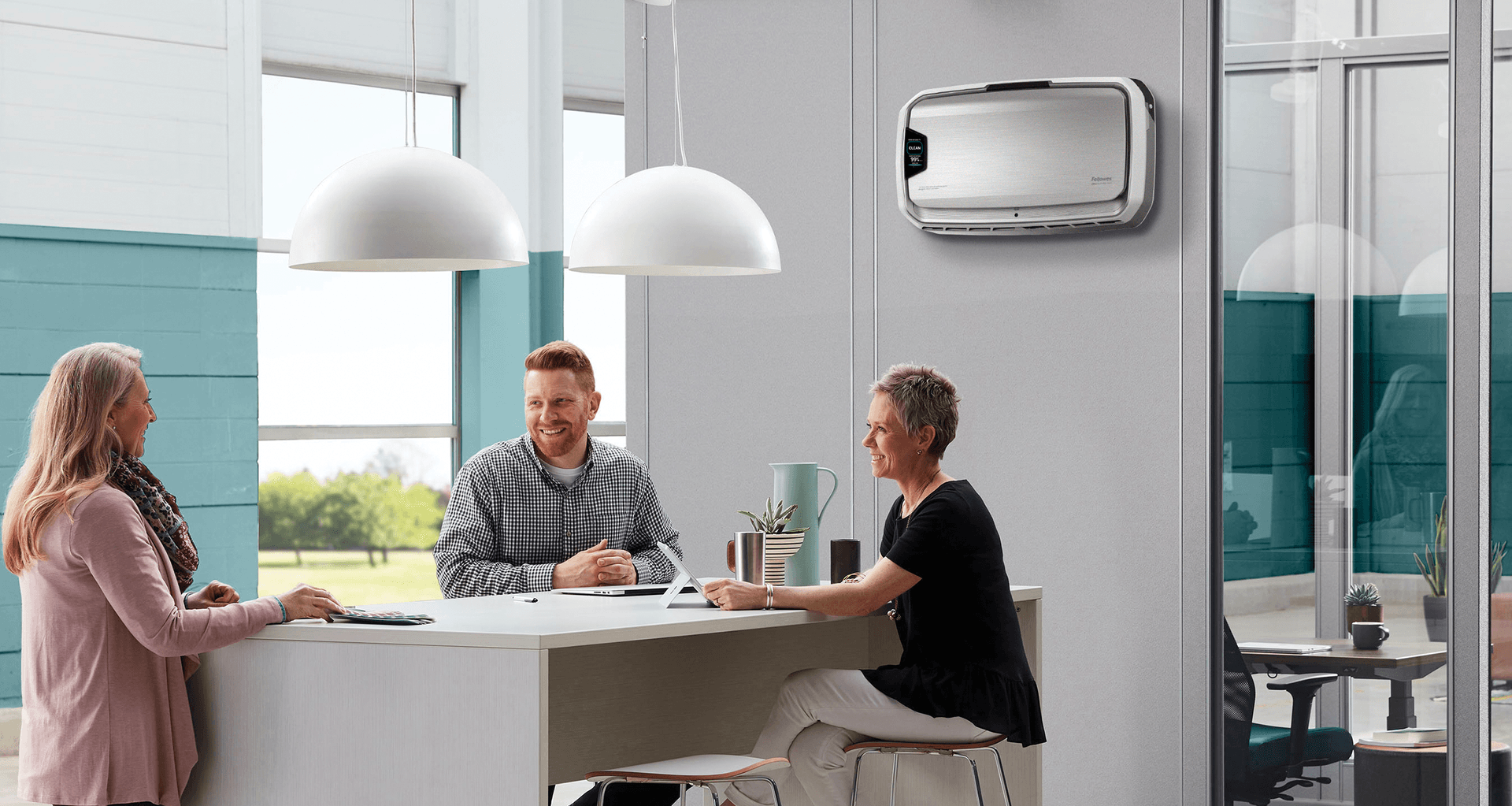Healthy Air, Healthy Spaces

Importance of Air Purification
While COVID-19 may no longer be top of mind for some organizations, recent surveys and continued research show that the need to improve indoor air quality (IAQ) is here to stay. The devastating global impact of the latest pandemic permanently altered public perceptions of indoor air quality and how organisations need to change. Employees are aware of the impact of air quality on their health.
The push for cleaner indoor air in our workplaces has been led by public health researchers, national associations and the government, which have all recognised the role employers, contractors and consultants can play in designing and improving workplaces for better indoor air quality (IAQ). Fellowes surveyed over 1,000-employees of all ages and found that only 1-in-3 said the air was very clean. However, 73% of people surveyed agreed that the quality of the air they breathe directly impacts their health and well-being.
Indoor Air Quality Management is Here to Stay
According to research conducted by Carbon Lighthouse, over 80% of millennials said they would feel safer returning to the office if they had access to real-time, transparent information on indoor air quality.
Employees are Demanding More Transparency When it Comes to IAQ:

How Viruses Spread Through the Air
The Centers for Disease Control and Prevention (CDC) have acknowledged what many researchers and scientists have long advocated: that the viruses can be transmitted through the air. Called aerosolisation, respiratory droplets of infected matter like fluid of sneezes and coughs from an infected person can travel in the air, potentially infecting people in close proximity. What’s more, this acknowledgment also verifies that the virus can travel more than six feet in the air.

Multi-layer Mitigation Plan to Improve Indoor Air Quality
How Should This Information Change Our Infection Prevention Protocols?
It’s time to change the way we think about indoor hygiene. As Bloomberg so aptly states: “Ask for Air Filters, Not Bleach.” We’ve taken rigorous action to eliminate surface contamination, it’s time we take the same consideration to air.
According to Harvard Schools for Health, the most ideal solution is to bring fresh outdoor air into a room. Unfortunately, it is not the most viable solution in many environments. While HVAC systems work to recirculate the air, they don’t clean the air. That is why it is recommended to utilise True HEPA filtration in addition to HVAC systems to ensure proper ventilation and filtration.
Installing HEPA filters in existing HVAC systems won’t improve building air quality. HEPA filters are bulky and do a better job of trapping germs in the direct area near the intake. These filters drag down HVAC efficiency and reduce air flow.

Focus on Cleaning, Instead of Moving the Air
By installing air purifiers that use a True HEPA Filtration in key areas, you can boost the effectiveness of HVAC systems by not only moving the air but cleaning the air.
That said, it is essential to first understand the difference between HEPA like filtration and True HEPA Filtration to ensure you and others are breathing clean air.
In an Open Letter
A group of 239 scientists in 32 countries have published their open letter to the global health community to present additional evidence. In their letter, the highly qualified group state:
- Multiple studies “have demonstrated beyond any reasonable doubt that viruses are released during exhalation, talking and coughing in microdroplets small enough to remain aloft in the air”
- These microdroplets “pose a risk of exposure at distances beyond [3 to 6 feet] from an infected person”
- “We are advocating for the use of preventive measures to mitigate this route of airborne transmission”
